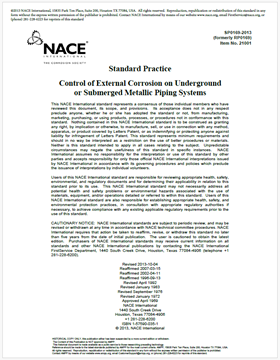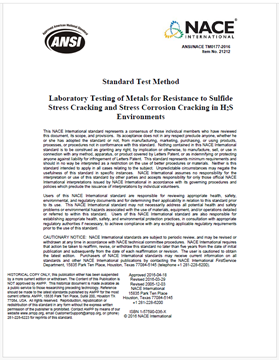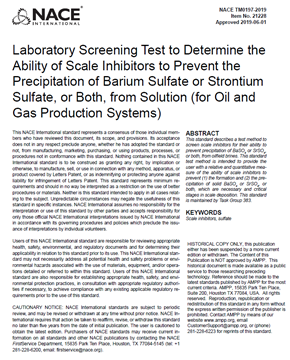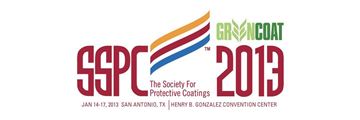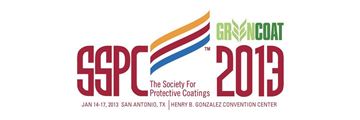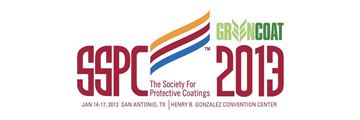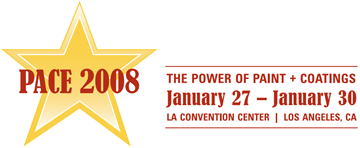Search
Products tagged with 'standards'
View as
Sort by
Display
per page
Modern Corrosion Testing: From Traditional Salt Spray Test to the Latest Innovative Methods with Advanced Environmental Controls
Product Number:
41216-962-SG
Publication Date:
2016
$20.00
MR0175-HD1999-SG, Sulfide Stress Cracking Resistant Metallic Materials for Oilfield Equipment
Product Number:
MR0175-96
ISBN:
1-57590-021-1
Publication Date:
1999
$179.00
NACE MR0176-HD1976-SG Metallic Materials for Sucker Rod Pumps for Hydrogen Sulfide Environments-HD1976
Product Number:
21303-HD1976
$179.00
NACE SP0169-2013 (formerly RP0169), "Control of External Corrosion on Underground or Submerged Metallic Piping Systems"
Product Number:
21001-SG
Publication Date:
2013
$179.00
NACE SP0188-2006 (formerly RP0188), Discontinuity (Holiday) Testing of New Protective Coatings on Conductive Substrates
Product Number:
21038-SG
Publication Date:
2006
$179.00
NACE TM0177-2016, Laboratory Testing of Metals for Resistance to Sulfide Stress Cracking and Stress Corrosion Cracking in H2S Environments
Product Number:
21212-SG
Publication Date:
2016
$179.00
NACE TM0197-2019, Laboratory Screening Test to Determine the Ability of Scale Inhibitors to Prevent the Precipitation of Barium Sulfate or Strontium Sulfate, or Both, from Solution (for Oil and Gas Production Systems)
Product Number:
21228-2019
Publication Date:
2019
$179.00
No Place for Hipsters when the Substance behind a Pretty Façade is Required
Product Number:
41213-775-SG
Publication Date:
2013
$20.00
Painted Aluminum – Concerns with Fabrication Details and Exposure
Product Number:
41213-786-SG
Publication Date:
2013
$20.00
Polymeric Interior and Exterior Marine Decking Systems
Product Number:
41213-801-SG
Publication Date:
2013
$20.00
Pull-Off Adhesion Strength Testing of Lining Systems on Concrete: A Review of the Various Direct Tensil Test Methods Used for Severe Service
Product Number:
41216-992-SG
Publication Date:
2016
$20.00
Regulatory Update: Current and Emerging Trends in Occupational and Environmental Health
Product Number:
41208-423-SG
Publication Date:
2008
$20.00




